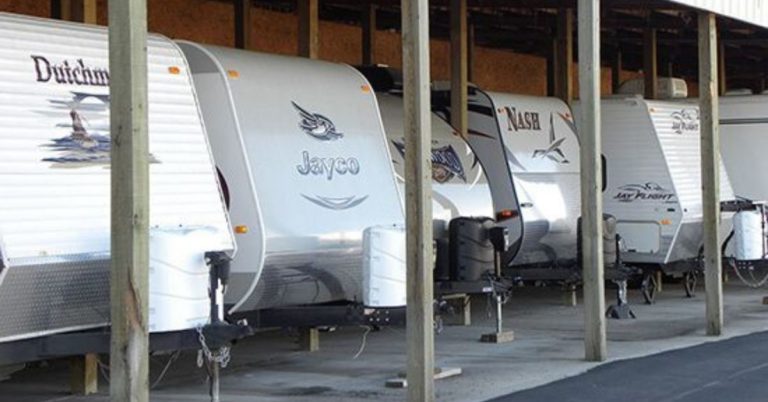What is the Best Way to Store an RV?
Depending on where you live, your RV likely isn’t a year-round vehicle. When the foliage starts to change color and the temperate cools, it’s almost time to stow away your motorhome until spring beckons it out of hibernation.
Unfortunately, storing your RV outdoors isn’t simply a case of finding a space on your driveway and throwing a tarp over it. There are multiple steps to take to protect your prized cruiser against the worst effects of winter. Skip just a few and you could risk significant—and extremely expensive—damage.
If you’re intent on storing your RV outside, make sure you follow these steps to mitigate the chances of damage from winter weather.
1. Drain the Water System
Let’s start with arguably the most important step. If there is water left in your RV’s plumbing during a cold winter, it may freeze and break pipes, fittings, and lines. Consult your owner’s manual (or a qualified technician!) and use a non-toxic RV antifreeze to flush water out of the system.
2. Wax and Cover
Resist the temptation to use a cheap plastic tarp: it will trap moisture, possibly causing mold. Instead, invest in a breathable, UV-resistant cover specifically designed for RVs. Before the cover goes on, give everything a thorough cleaning and waxing for maximum protection.
3. Clean, Open, and Close
The “thorough cleaning” part also applies to the interior. That means your cupboards, upholstery, toilet, fridge—everything, really. To prevent moisture and mold, also leave the fridge and cupboards open, as well as the rooftop vents (as long as you have vent covers installed). Curtains and shades should be closed, though, to prevent sun damage.
4. Remove the Battery
Freezing temperatures are terrible news for RV batteries. Disconnect your battery and store it somewhere cool, like a basement. Check and recharge the battery every couple of months to make sure it’s ready when you need it.
5. Prevent Infestations
You’re not the only one who loves to spend time in your RV—pests do too! Take some time to remove all food, and consider placing mouse and ant traps in and around your motorhome. You may also want to inspect the underside and seal any holes or cracks.
6. Take the Pressure Off
Sitting in one place for months at a time may distort your RV tires. Use jacks and blocks to keep the pressure off your tires, or take it out for a spin once a month to prevent pressure damage.
7. Find a Safe Spot
If you have to store your RV outside, pay close attention to the immediate surroundings. If possible, avoid storing your motorhome too close to trees, on uneven ground, or anywhere it’ll be exposed to high winds. If you intend to park your RV on the street, you should check with city authorities first—it may not be permitted.
Long Term Outdoor RV Storage
If all those steps seem a little overwhelming—or simply too time-consuming—there may be an easier alternative available to you: indoor RV storage!
Yes, it’s true that your driveway is free and a storage unit is not, but consider the many benefits a heated unit will bring. While other RVs are subject to the worst winter weather, yours will be warm, covered, pest-free, and safely inside a completely secure facility until the open road calls you again.


